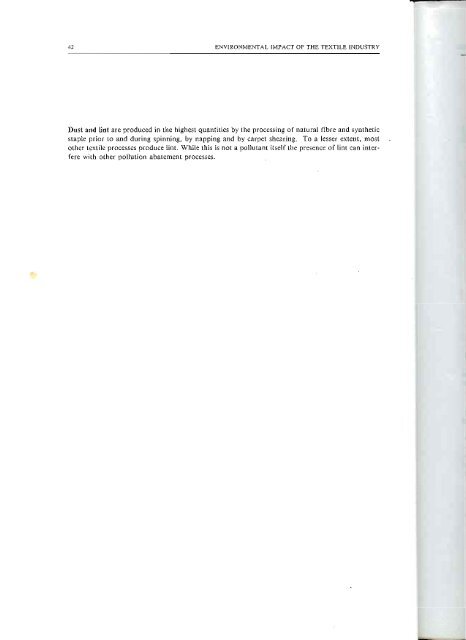Contributor, The Textile Industry and the Environment, UNEP
Contributor, The Textile Industry and the Environment, UNEP
Contributor, The Textile Industry and the Environment, UNEP
Create successful ePaper yourself
Turn your PDF publications into a flip-book with our unique Google optimized e-Paper software.
42 ENVIRONMENTAL IMPACT OF THE TEXTILE INDUSTRY<br />
Dust <strong>and</strong> lint are produced in <strong>the</strong> highest quantities by <strong>the</strong> processing of natural fibre <strong>and</strong> syn<strong>the</strong>tic<br />
staple prior to <strong>and</strong> during spinning, by napping <strong>and</strong> by carpet shearing. To a lesser extent, most<br />
o<strong>the</strong>r textile processes produce lint. While this is not a pollutant itself <strong>the</strong> presence of lint can interfere<br />
with o<strong>the</strong>r pollution abatement processes.

















